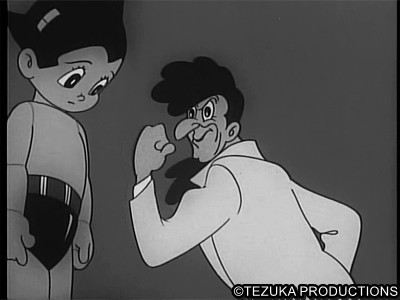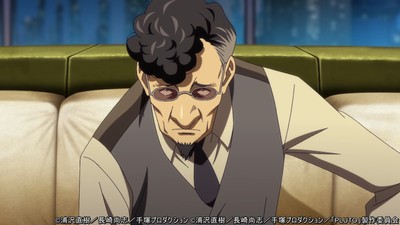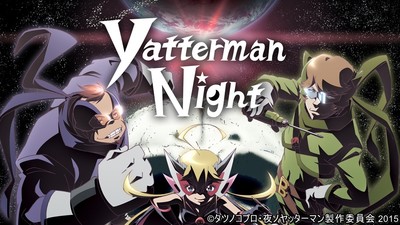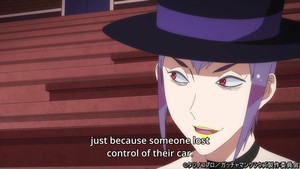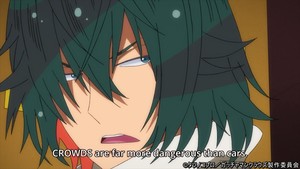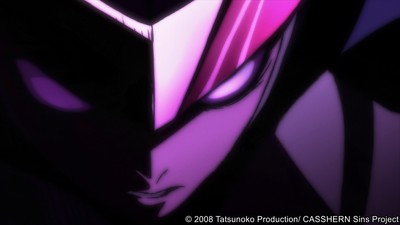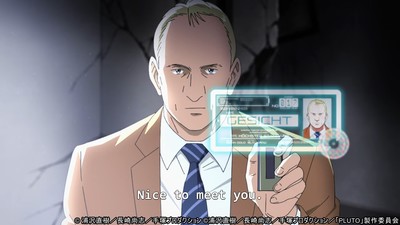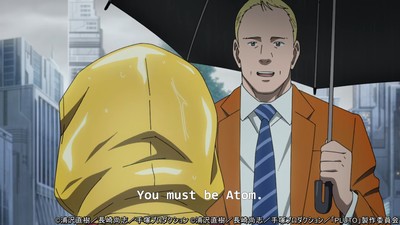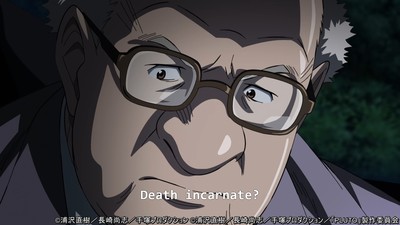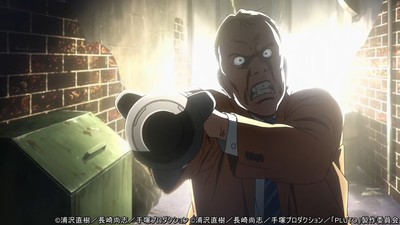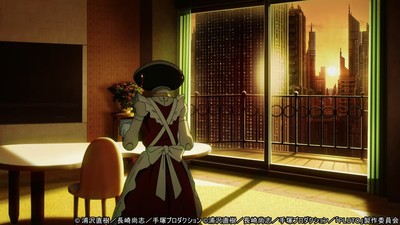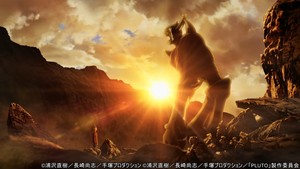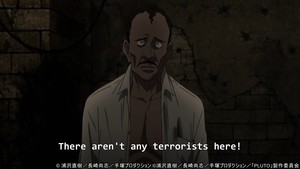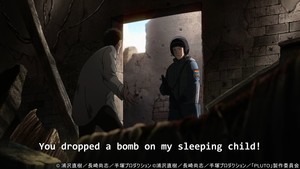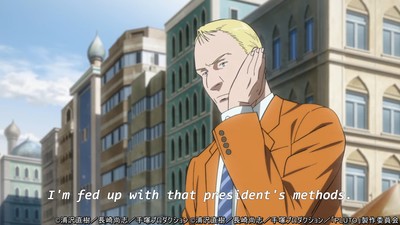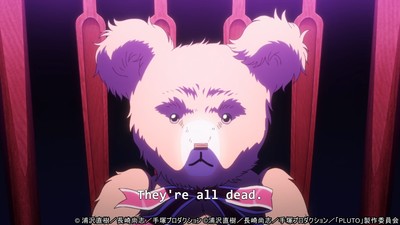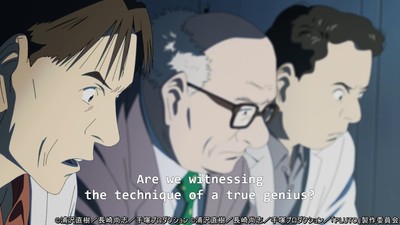Chris and Steve dive into Naoki Urasawa and Studio M2‘s Pluto anime and discuss why “aging up” a property intended for children can be a perfect sandbox for broader commentary.
The anime discussed in this column are streaming on Netflix, Funimation, Crunchyroll, and HIDIVE.
Disclaimer:The views and opinions expressed by the participants in this chatlog are not the views of Anime News Network.
Spoiler Warning for discussion of the series ahead.
Chris
Steve, we’ve got a two-for-one deal on storied anime adaptations this week. Not only has
Netflix graced us with yet another take on
Osamu Tezuka‘s esteemed oeuvre, but this is also a new anime adaptation of a manga by the notoriously nuanced
Naoki Urasawa.

It may not be a cold day in hell, but it’s at least a momentous one in the unique underworld of
PLUTO.
Truly, nothing embodies the “anime for grown-ups” vibe of a Urasawa joint quite like an absence of the ol’ dot-noses. Then again, that might not all be down to Urasawa’s preferences. He’s taking on Tezuka here, who had a predilection for prominent proboscises. Even Urasawa’s take on Dr. Tenma has rounded things off considerably.


Sidebar: I am only just now realizing that when broadly discussing Urasawa’s works, I might need to specify which Dr. Tenma I am talking about.
PLUTO, Urasawa’s ambitious and acclaimed retelling of one specific arc from the classic
Astro Boy, has finally gotten a glossy, prestige animated adaptation for all to enjoy. It’s a hefty collection of eight hour-long episodes, and its subject matter covers everything from robot rights to the United States’ bloody pattern of interference in Middle Eastern political affairs. You know, light material that has absolutely no bearing on any current events.
Speaking as a child of the post-9/11 era, the War on Terror, and the invasion of Iraq, I found myself periodically taken aback by
PLUTO‘s directness. I hadn’t read the manga myself, so I got freshly affected by this anime version by just how blunt its allegory was. I don’t know that I’d fault anyone who turned it off because they were hoping for a bit more of an escape in their
Astro Boy spin-off.

The American equivalent would be like tuning into a Mickey Mouse cartoon and seeing the visage of Saddam Hussein. I respect it.

That would be the ideal place to bring up Disney’s WW2-era propaganda cartoons where Donald Duck hashed it out with Hitler, but that leads to a key point about
PLUTO: It’s not exactly a new idea. Taking a beloved pillar of classic comic/cartoon history and transforming it into a vector for a serious approach has a fair amount of precedent in the art form. Granted, it can’t always be as nuanced as
PLUTO, so you just as often wind up with stuff like
SYFY making
The Banana Splits into a slasher flick or that hackneyed new attempt to turn the freshly public-domain Winnie the Pooh into a horror movie.
Yeah, I think it’s important to lead with PLUTO being a unique (and uniquely good) take on this pattern—for reasons we’ll get into—but as mass media becomes increasingly recursive, we’re seeing a lot of this approach. Hell, the “gritty retelling told from the perspective of a villain who is also the title of the work” is a genre unto itself now with films like Cruella and Maleficent. PLUTO was ahead of the curve in 2003!
That concept seems to shake out better in our familiar anime and manga sphere here, even if they aren’t as common. 2015 brought us
Yatterman Night, an interesting experiment that rebooted the
Time Bokan franchise’s progenitor (alongside several other
Tatsunoko series) from the perspective of the villains, AKA the main thing most people fondly recalled from
Yatterman.

And hell, this very season has blessed us with
Power of Hope: Precure Full Bloom, which sees the childhood heroes of previous Pretty Cures all grown up and grabbing beers after work together to cope with the anxieties of adulthood.

Now that there is some actual “adult” anime. And I think much of my frustration with many (mainly Western) examples of X, But For Grown Ups! is their limited perspective on what an “adult” TV show or film should be. What does it mean for a story to be “darker,” and why should that in itself be an indicator of advanced maturity? There’s so much more nuance to it. Like another
Tatsunoko reboot,
Gatchaman Crowds is bright, colorful, goofy, and full of complex musings on the state of society and social media.

Gatchaman Crowds (which just turned ten this year, jeez, speaking of aging) swings close to what
PLUTO is doing. No, it’s not repeating or recreating many characters from the original the way Urasawa’s
Astro Boy take-off is. But
Crowds uses the framework of the classic
Gatchaman and what a “Science Ninja Team” can be to comment on (then) relevant modern social issues. Often in the same ripped-from-the-headlines way as
PLUTO.




And often with the same degree of subtlety.
All art is, to some extent, an extension of the political climate in which it was created, and that is true for children’s cartoons as much as anything else. So, I love to see a vision homing in on that aspect and using “low” art as a megaphone for pointed, unsubtle commentary. In fact, generally speaking, what I want out of any piece of art is vision and direction from people with something to say. That’s going to be true no matter what decade it originates from.
That’s another aspect to elucidate on. It would feel a little disingenuous to act like Urasawa’s
PLUTO was only using
Astro Boy as a convenient template.
Osamu Tezuka‘s works,
Astro Boy included, had their density, darkness, and capacity for commentary. Many unsuspecting kids were
scarred by
Unico. Plenty of the God of Manga’s output includes ideas about robots as reflections of humanity and its capacities, like
Metropolis.
One of the go-to examples is how, for years (and maybe to this day), people would claim that
Evangelion legitimized the
mecha genre and made it serious. Anyone who watches the original
Mobile Suit Gundam will find a lot of poignant ruminations on war (between all of the Tomino-isms). Likewise, I’m sure anyone going further back to
Astro Boy will find that Tezuka had things to say. He was an artist! And a hell of an influential one at that. Of course, other artists like Urasawa will pick up on what he was doing and respond to it with their art.
Keeping with the robot boy theme, one of my favorite anime series is the incredibly moody Casshern Sins, Shigeyasu Yamauchi‘s post-apocalyptic meditation on death and ruin. I’ve never watched the original Casshern, and I doubt it is quite as oppressively melancholic, but I’m sure the seeds were there.

Tatsunoko‘s an oddly consistent source of this sort of thing, aren’t they? It’s a testament to the lasting influence of archetypical entries like
Gatchaman and
Casshern that they’re so ripe for reinterpretation. I don’t know that
PLUTO ever hits the same levels of esotericism that
Sins winds up playing in, but it’s impossible not to see the parallels, concept-wise.
It’s an approach that can be applied to “classic” anime series, even if they weren’t necessarily pitched to younger audiences. Go Nagai‘s Devilman delved so profoundly into darkness by its finish that it famously never had its original ending wholly adapted until 2018’s DEVILMAN crybaby. But even within that context, Masaaki Yuasa‘s take on the material still comes off as a radical, personal reinvention by the artists behind it striving to say things about the society the story occupied in its moment.

The key is strong, creative voices who bring their perspectives to the material in question.
Kenji Nakamura,
Masaaki Yuasa,
Shigeyasu Yamauchi—these are some of the finest directors and storyboarders in the business, and the results make it obvious. They took on these projects because they were passionate about them. Likewise,
PLUTO works for me because it aligns with Urasawa’s other works. The man loves to craft a complicated slow-burn mystery thriller, and he’s not going to let
Astro Boy‘s setting stop him.

That leads me to
PLUTO‘s one entertaining quirk. It would be entirely possible for some unsuspecting viewer to click onto this cool-looking new
Netflix show and make it up to at least the end of the first episode, not even realizing they were watching an
Astro Boy riff. It’s presented as a customarily tight Urasawa thriller and 100% works on its own terms.


That might be down to opting to use the original Japanese names for the characters, regardless of release territory. It is cool but also a little disappointing that we didn’t get to hear meditations on war crimes and the capacity for human hatred coming out of people with names like “Dr. Packidermus J. Elefun.”

Alas. That is also how the manga’s first volume is structured, with Atom only appearing in its final pages. Centering the story around Inspector Gadget—sorry, I mean Inspector Gesicht makes more sense for Urasawa’s hard-boiled storytelling. It also signals his intention to make the story his while working in tandem with Tezuka’s legacy. It was a balancing act so stressful he went on to say he’d never do anything like it ever again, but he certainly pulls it off with aplomb here. The breadcrumb trail of weird murders, strange visions, eccentric characters, and international conspiracy is Urasawa through and through.
I can’t blame Urasawa for his delicate feelings on approaching the source material, given its storied status. That aspect, as well as the structure of the original manga’s volumes, also speaks to the subject of adaptation as applied to
PLUTO itself. At eight hour-long episodes,
Netflix‘s
PLUTO would seem to roughly correspond to the respective manga volumes, and that extra-length format feeds into the prestige thriller vibes the work is shooting for.

Yeah, it’s funny there are multiple layers of “REAL anime for REAL adults” going on here. Not only do we have
PLUTO as a story, but the adaptation also conforms to the style of series most people wouldn’t be embarrassed to recommend to their mom. Mostly, it prioritizes realism and naturalism over-exaggeration, with highly detailed faces and cinematic camera effects. It fits the tone, don’t get me wrong, but you can tell it’s aiming for a much broader swathe of the audience than anime regulars alone. And, arguably, it should!


I have seen some commentators out there begrudged that
PLUTO‘s visuals are played so grounded and straight. But I’m on your team that it fits the tone and intent of the story to a T. It’s not necessarily surprising given how infamously particular Urasawa can be about the presentation of his work. This is a guy who didn’t even let his manga be
published digitally until recently. So, in that respect, it makes sense the anime version would hew so close to the manga panels. It straight-up reproduced a bunch of them for its opening sequence.

It’s only a little ironic that a work that is itself a radical adaptation of
Astro Boy gets an adaptation that’s more transpositional than transformative.
Urasawa writes crowdpleasers. He’s a very successful mangaka, and he can spin a page-turner like nobody’s business, so I’m fine with straightforward adaptations of his material that maximize its reach. That makes it difficult for me to be too critical about its placement on Netflix. Since, again, it has that crossover appeal potential.
Even with the wilder robot designs or several setpieces involving characters fighting a giant tornado, I honestly can’t disagree with continuing to play this one in Urasawa’s carefully calculated clinical style. It means that for a story that’s pointedly 75% talking heads having discussions as this kind of plot is wont to be, it never falls into the bloated feeling of more disposable
Netflix fare. By the end of its run, I honestly felt
PLUTO had earned its eight-hour movie status.




Also, just because its style trends towards “grounded” doesn’t mean that
PLUTO can’t throw out a striking scene or two when it wants to.
Netflix‘s bitrate be damned.
Twenty years removed from its inception, this turns an adaptation of
PLUTO from a current events commentary into something even more steeped in cultural history than those
Tatsunoko shows. It can be easy for commentators in These Modern Times to muse on the Iraq War and question the level of opposition to it at the time.
PLUTO‘s story, originally started in 2003, shows how people in all parts of the world were already considering the invasion. Adapting it in 2023 lets them hammer home how right they were in those fears.


A huge lynchpin in the narrative is an inquiry into “robots of mass destruction” that turns up nothing yet spurs the war nonetheless. It’s that blatant.
It speaks to the value and opportunities of an offshoot like
PLUTO. The original “The Greatest Robot on Earth” storyline from Tezuka’s
Astro Boy featured a deposed Middle Eastern dictator as the directing force of the
PLUTO robot. Urasawa took the opportunity to flesh that aspect out as a vector for his commentary on the then-current situation. It’s in the same vein as
Gatchaman Crowds‘s treatises on technology and social media in how it uses elements of the original to illustrate how those can still be used to explore ideas in the modern day.

Put another way: Urasawa could have commented on the Iraq War in a wholly original story. But it adds another layer to its salience to illustrate how its relevance can be reflected in the themes of something as foundational as
Astro Boy.
There’s always that cynical impulse to assume any reboot, far-removed sequel, or reimagining is a cash grab preying on audiences’ desire to be fed familiarity over and over. And there’s plenty of that to go around, don’t get me wrong. But the history of art is also the history of stories being retold, paintings being repainted, and music being reinterpreted. Novelty is not in itself a virtue. It’s all about how one wields their influence. To me,
PLUTO‘s boldness justifies the loftiness of its reach, and its many payoffs remain true to that vision even if it also has a few requisite Urasawa plot threads that don’t go anywhere.

It’s pretty cool how this anime can feel so quintessentially Urasawa, even as he’s right in the middle of the adaptation sandwich that is its existence. But the strength of that voice is, as you mentioned, key to this sort of reinvention working at all. Separate from its prestige as a Urasawa manga adaptation or its “
Astro Boy For Adults” high-concept pitch,
PLUTO can stand as a story on its own. That’s way beyond something where the joke doesn’t land if you don’t know who the hell
The Banana Splits are.

It’s great! It’s not the first of its kind, nor the last, but in a perfect world,
PLUTO could be a guidepost for other artists struggling to make their voices pierce through their influences. And if nothing else, it’s a masterclass on how Urasawa translated the original Atom’s two-pronged hairstyle into something a person could conceivably wear on his head.

Forget any deftly applied layers of adaptational allegory; That’s how you know the man is a true genius.






